Outcrop Core Collection
In the first varve studies in North America and Sweden varves were generally measured in the field. However, in some situations it can be difficult to get accurate measurements of summer and winter layer thicknesses at an outcrop. This is especially true if the varved sediment is very clayey and wet, varves are thin (<1 cm), or subtle deformation features or unconformities occur in the varves. Our studies of outcrop exposures of varves at Tufts now routinely start with the collection of overlapping cores of the outcrop that can be transported back to a lab and partially dried for detailed study. The cores can also be used for sampling for microfossils and other features and make excellent teaching specimens. Outcrop cores have the advantage of greater accuracy and they also provide the possibility of creating a digital image archive of varve measurements. The measurement archive can always be checked for potential errors or anomalous varve thicknesses as one tries to match the varve record with other sequences. Given that almost all varve sequences have different interannual couplet stratigraphy, mistakes are often made in a first attempt at measuring many varve sequences. Later attempts at measurement often come with a better understanding of the repeated character of summer and winter layers, leading to more accurate annual layer recognition and measurement.
The system described below is the one used at Tufts University. It has the advantages of being easy to assemble and inexpensive. The system involves driving outcrop core liners or pipes into the sediment using a drop-weight core driver. The core liners are usually 2-ft lengths of 3-in inside diameter (ID) schedule 40 PVC pipe, which is easily cut and machined, and yet is a very strong material, easily able to withstand being driven into the outcrop. The bottom end of each 2-ft pipe section is beveled with a belt sander on the outside to produce a cutting edge. Smaller PVC pipe (2 or 2.5-in ID) can be used with success, but generally is not always able to show beds over a wide enough distance to escape core deformation or side-step bedding irregularities. PVC pipe larger than 4-in ID can also work although these cores are very heavy and far more difficult to drive into the outcrop.
PVC Coring Tubes
PVC pipe is easily cut and machined to serve as coring pipe for collecting outcrop cores. The inside of the beveled end of the coring pipe is smeared with Vaseline to help the sample slide into pipe during coring. Smaller pipe, down to 2" can be used with good results but 2.5-3" is recommended.
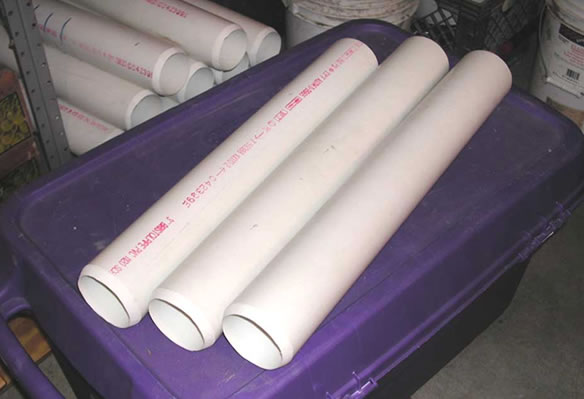
3-inch ID PVC (schedule 40) pipe cut to 2-ft lengths with ends beveled.
Driving Cores with Drop-Weight Core Driver
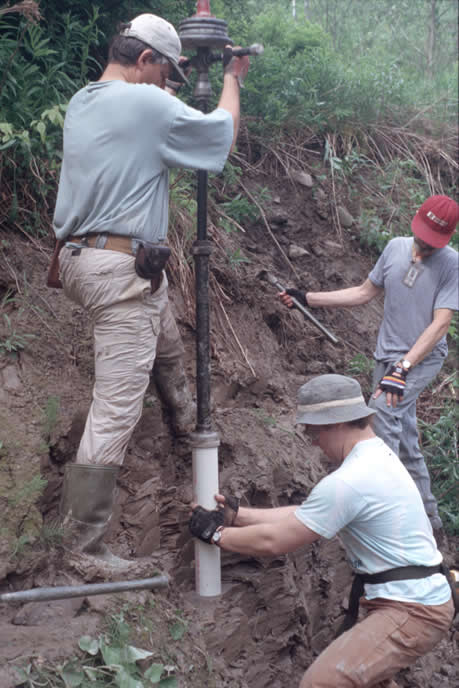
Left to right: Jack Ridge, Jonathan Nichols, and Duane Braun at Starrucca Ck. in northeastern Pennsylvania.
Shown at right is the drop-weight core driver being used to drive 3"ID PVC pipe sections perpendicular to bedding planes. Download instructions for making this device.
Below left are pieces of the drop weight core driver. Two lower pieces are shown, one for 2.5-3"ID and one for 2"ID PVC pipe. Barbell weights are clamped and also duct-taped to the upper handle assembly with heavy card board spacers to prevent them from clanging.
Below right, a close up view of bottom of lower half of core driver that fits over 3"ID PVC pipe or 2.5"ID PVC pipe with an end cap. The threads inside this coupling have been removed on a lathe to easily accept the PVC pipe. It should be snug but not tight. A flat platform with a hole to allow air escape has also been mounted with liquid steel epoxy inside the coupling cap as a sturdy, flat, pounding platform for the PVC pipe.
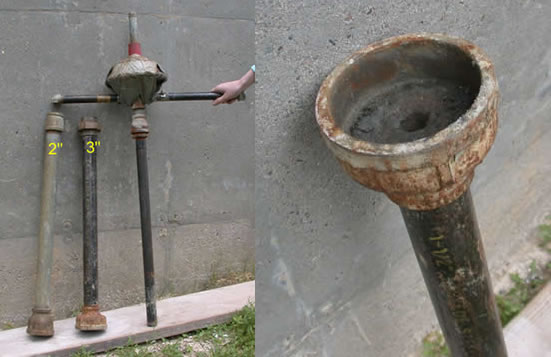
The large 1.5" x 3" reducing coupling of the core holder that fits over a 3" PVC pipe is the hardest component to find and will likely require a visit to a well-stocked plumbing supply store. Buy more than one if possible. The 2 " length of 1" nipple on the handle is the weakest link in the system. We recommend no less than 1" pipe nipple and carrying several replacements and pipe wrenches into the field is wise. To download a PDF of the core driver assembly instructions, click here.
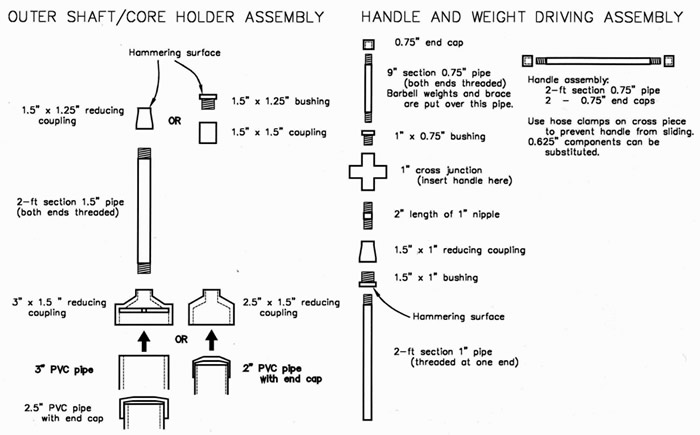
Core driver assembly.
Removing Cores
Cores may be dug out carefully with shovels and knives and capped with duct tape on both ends.
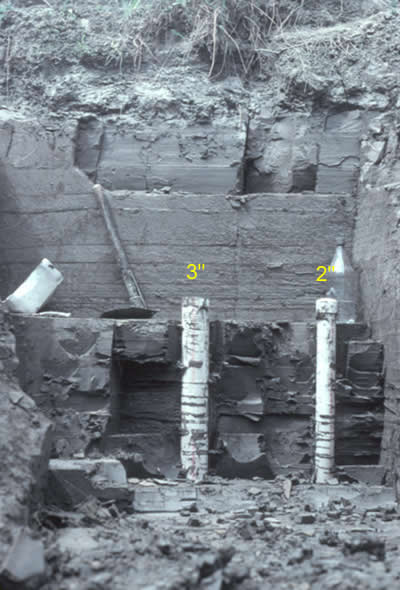
Outcrop cores (B2) at Newbury, VT. The thin and very clayey character of these varves in the field made core collection and lab analysis of dried cores necessary.


